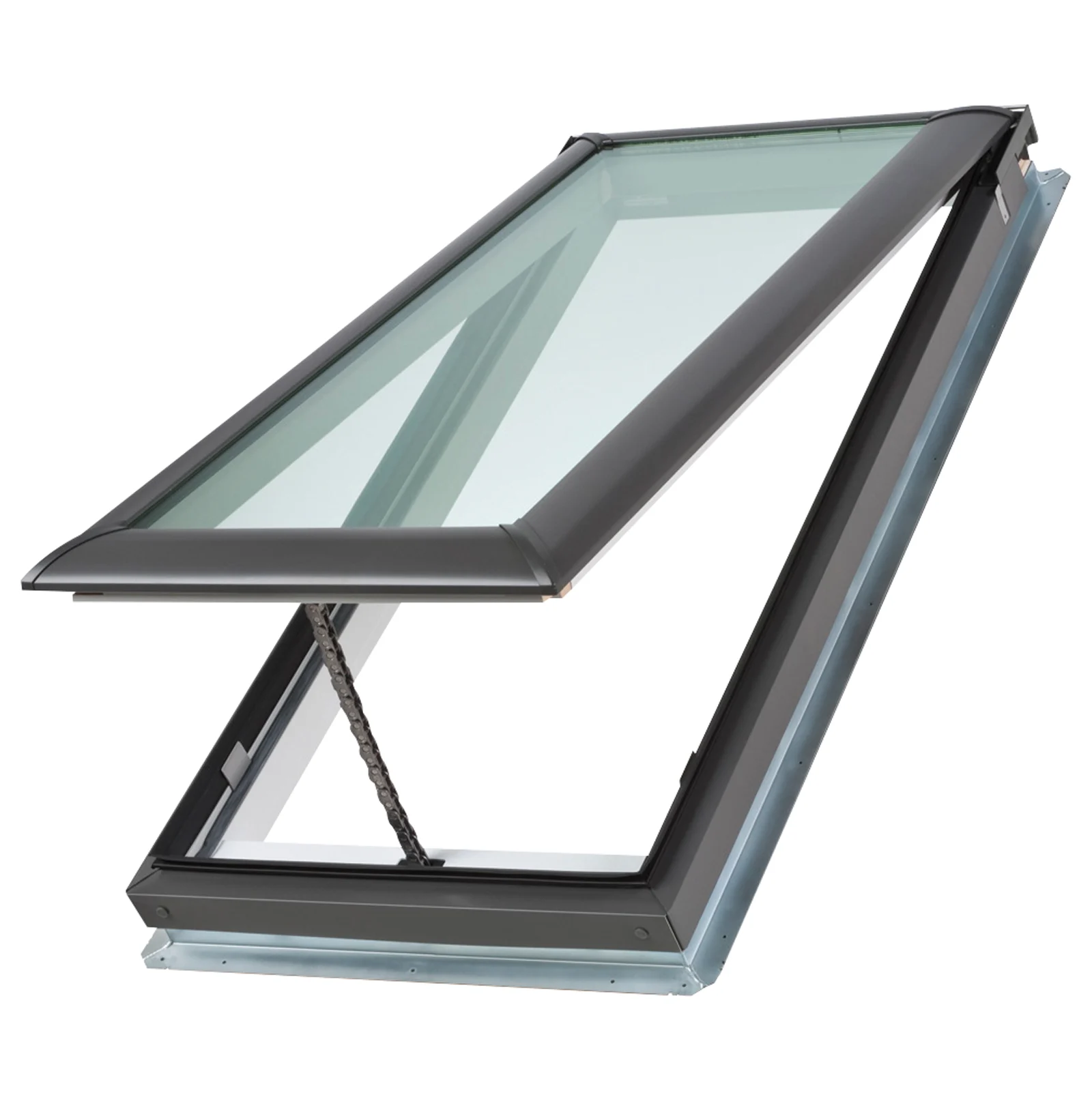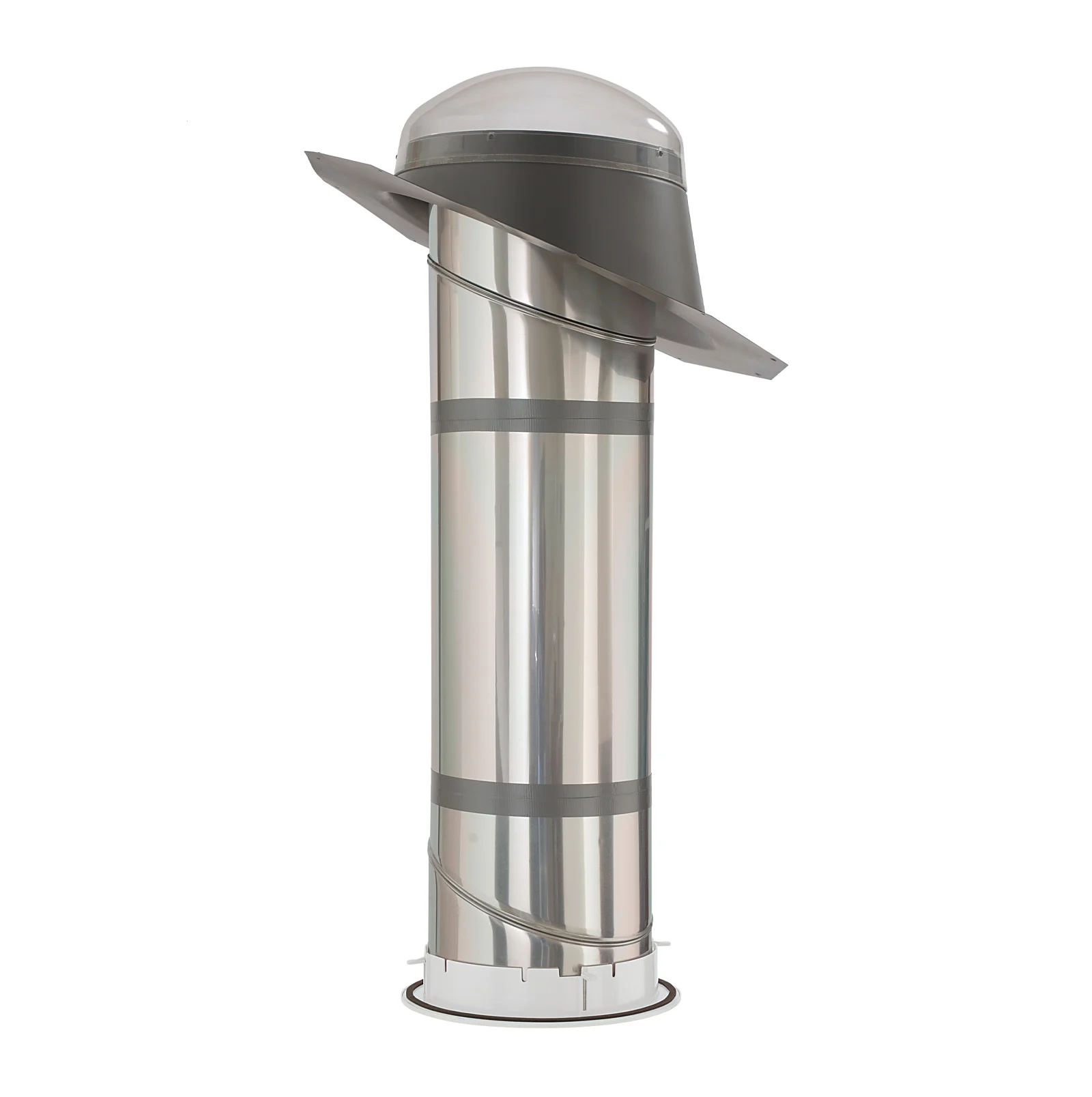Here’s How to Brighten Any Room with a Skylight
A skylight can brighten a dark space, make rooms seem bigger and completely change the character of your home.
Bringing in natural light can help improve your home’s energy efficiency, too. Choosing the right skylight entails knowing the right materials, sizes and features that meet your needs. Here’s what to look for.

Types of Skylights
There are three main categories of skylights: fixed, venting and sun tunnels. Each category has its own features and benefits and is best for specific applications. Here’s how they stack up.
TIP: Skylights are best for gable, hip and shed roof shapes that readily shed rainwater. Flat roofs typically allow water to pool, staining the skylight’s glazing and leading to a cloudy appearance.



Buying Considerations
Once you know what broad category of skylight you’re most interested in, there are additional factors to consider. Here are the three important ones to weigh as you research your product choices and consider whether to DIY or hire a pro.
Installation Style
Skylights come in three main installation styles: curb mounted (designed to be installed on top of a site-built raised frame, with the skylight sitting over the curb of the box), deck-mounted (features a built-in curb that is ready to install directly on the roof deck) and self-flashing (placed directly into the roof opening). The complexity of the installation will vary, which will, in turn, impact labour costs.
Location & Light
Skylights can reduce your electricity consumption and help cool your home in the summer, decreasing your need for air conditioning. The key to achieving this is choosing the right materials and features, in addition to determining the optimal placement of your skylight. South- or west-facing skylights capture more direct sun than north- and east-facing ones.
Skylight Ratings
Skylights are rated for heat loss, solar heat gain and UV blockage. For better energy efficiency, look for a skylight with a low U-value (as it offers more resistance to heat flow) and a low shading coefficient (indicating low solar heat gain). On the other hand, look for a higher R-value (indicating better insulation capability), a high visible light transmission (VLT) rating (for plenty of natural light) and a high percentage of UV blockage (ensuring fewer ultraviolet rays make it through the glazing).
Skylight Materials
Skylights come in basic plastic or various types of glass (which is available with different types and coatings). These materials vary in their aesthetics, energy efficiency, durability and price. Here is a comparison.
Plastic | The average plastic skylight is double-glazed, with the two panes separated by an air space. It’s light, easy to handle and inexpensive. The size is standard, and the shape can be a dome, a bubble, a dormer or a pyramid. |
Tempered, Double-Insulated Glass | As the minimum standard to look for in glass skylights, this option is tempered for safety and features two layers of glass with an air space for energy efficiency. |
Tempered, Double-Insulated Glass with Low-e Coating | With this type of skylight, the outer pane is tempered, and the inner pane features an invisible low-e (low-emissivity) coating. This coating helps to retain heat in winter, reduce heat in summer and filter UV rays, which damage fabrics, furniture and floors. |
Tempered, Double-Insulated Glass with Low-e Coating and Argon Gas | To increase energy efficiency and insulation, the air space between glass panels is filled with argon gas. This skylight features a bronze tint to further reduce solar heat gain. |
Tempered-Over-Laminated Glass with Low-e Coating and Argon Gas | The lamination in this skylight eliminates the danger of interior glass breakage. It also blocks nearly all UV rays, which makes it ideal for south- and west-facing roofs. |
Skylight Features
Here are some additional product features that can help you get the most satisfaction from your skylight.
Light-Blocking Shades
These built-in skylight shades can block out powerful sunlight during peak summer heat, but they can also help you sleep at night by preventing heat loss and reducing ambient city light.
Smart Home Integration
Sensors that detect rain, humidity and heat (and more) can be fully integrated into a smart home and controlled remotely on your mobile device when you choose a compactible smart skylight. VELUX® ACTIVE with NETATMO is one example of this technology.
Sensors
Some skylights come equipped with rain sensors that automatically close your skylight at the first drop of rain. Heat and humidity sensors can trigger the skylight to open or close to keep the room environment how you want it.
Cellular Shades
This type of bult-in shade diffuses incoming light to reduce glare and help protect your furniture and carpets. It lets some light in, ensuring your home has a pleasant ambience.
Venetian Blinds
Another built-in skylight treatment option, this style of built-in blind allows you to both reduce incoming light and redirect it to a more desirable location.
Light Shaft
If you’re installing a skylight in a room with an attic, you’ll need to build a light shaft. Shaft shape dictates how light spreads through a room. Flared shafts spread light over the widest area. Perpendicular shafts focus light directly below. Angled shafts pre-direct it in any direction you choose.